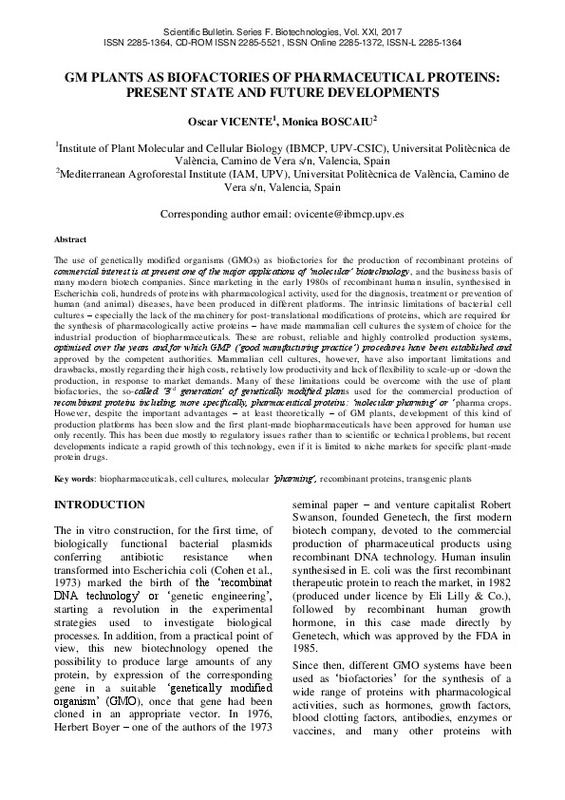JavaScript is disabled for your browser. Some features of this site may not work without it.
Buscar en RiuNet
Listar
Mi cuenta
Estadísticas
Ayuda RiuNet
Admin. UPV
GM Plants as biofactories of pharmacutical proteins: present state and future developments
Mostrar el registro completo del ítem
Vicente, O.; Boscaiu, M. (2017). GM Plants as biofactories of pharmacutical proteins: present state and future developments. Scientific Bulletin. Series F. Biotechnologies (Online). XXI:308-313. http://hdl.handle.net/10251/108069
Por favor, use este identificador para citar o enlazar este ítem: http://hdl.handle.net/10251/108069
Ficheros en el ítem
Metadatos del ítem
| Título: | GM Plants as biofactories of pharmacutical proteins: present state and future developments | |
| Autor: | ||
| Entidad UPV: |
|
|
| Fecha difusión: |
|
|
| Resumen: |
[EN] The use of genetically modified organisms (GMOs) as biofactories for the production of recombinant proteins of
commercial interest is at present one of the major applications of `molecular¿ biotechnology, and the ...[+]
|
|
| Palabras clave: |
|
|
| Derechos de uso: | Reserva de todos los derechos | |
| Fuente: |
|
|
| Editorial: |
|
|
| Versión del editor: | http://biotechnologyjournal.usamv.ro/ | |
| Tipo: |
|







